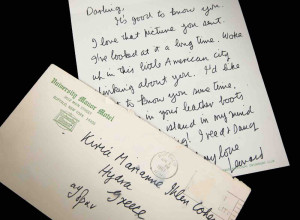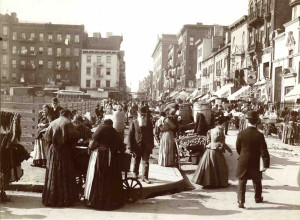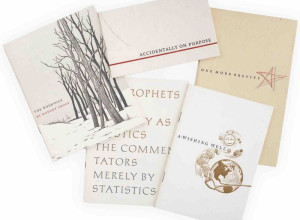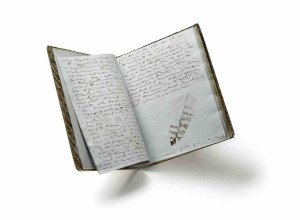Is This the Oldest Book in the World?

The oldest known book fragment in the world to date was recognized by conservators at the University of Graz by a thread remnant, sewing holes, the centerfold and the text arranged in columns.
During routine work on papyrus fragments in the Special Collections at Graz University Library, conservator Theresa Zammit Lupi came across an Egyptian papyrus from the 3rd century BC. It shows evidence of sewing, indicating that it must have been part of a book in codex form.
The fragment was found in 1902 in the wrapping of a mummy. Being 400 years older than the earliest known books to date, the find challenges the currently accepted timeline of book history.
The earliest codices known to date with evidence of stitching in book form have been dated to 150-250 AD. Two examples are in the British Library (Add MS 34473) and the Chester Beatty Library, Dublin (CBL BP II). “The Graz Mummy Book was created 400 years earlier, making it the oldest surviving form of a book we know of to date,” said Erich Renhart and Thomas Csanády, heads of the Special Collections at Graz University Library.
“However, it is not unlikely that more such codex fragments exist in other collections that have just not been systematically searched for so far. After all, papyrus was a relatively cheap writing material, and large quantities of fragments have survived,” said Renhart.
The papyrus fragment (Graz, UBG Ms 1946), which measures only about 15 x 25 cm, was discovered during an excavation in the Egyptian necropolis of Hibeh (today El Hiba) south of Fayum (El-Fayoum), the fragment now belongs to a collection of 52 papyrus objects, some of which were used as so-called cartonnage for mummy wrappings in the Ptolemaic period (305-30 BC).
The Graz Mummy Book is a bifolio (folded leaf) from a notebook recording tax accounts for beer and oil in Greek around 260 BC. “This discovery was totally serendipitous," said Theresa Zammit Lupi, head of conservation of the Special Collections of Graz University Library. "First I saw a piece of thread, only then did I notice the format of a book. I saw a central fold, the stitching holes and the written text within clearly defined margins on the papyrus. As a conservator, it feels very special to contribute to the history of the book. At the same time, you think it's surreal. It's like watching a movie!”















